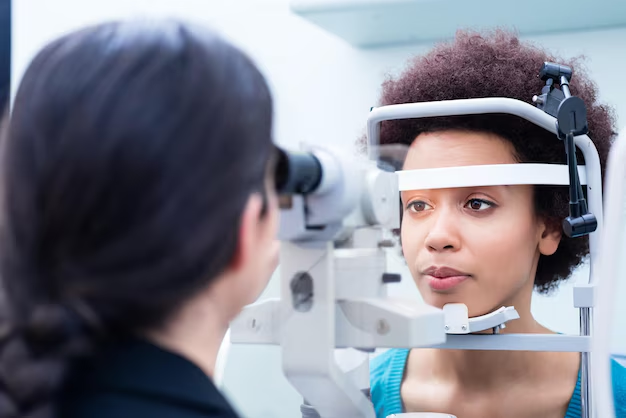Understanding Streaks of Light After Cataract Surgery: What to Expect and When It’ll Pass
Experiencing streaks of light after cataract surgery is a common concern for many patients. If you’ve recently undergone this widely performed procedure and are noticing unusual visual effects, rest assured that you are not alone. Many individuals report seeing light streaks, halos, or glare shortly after cataract removal. This comprehensive guide will walk you through why these visual disturbances occur, what factors contribute to their duration, and potential steps to manage them effectively.
What Are Streaks of Light Post-Surgery?
Visual disturbances such as streaks of light are often perceived as radiant lines or halos that seem to spread from sources of light. These unusual visual effects are among the most frequently reported phenomena following cataract surgery.
Why They Occur
Intraocular Lens (IOL) Type: Following cataract removal, an artificial lens is typically implanted. Choices like multifocal lenses, which aim to reduce dependence on glasses, can lead to more pronounced visual anomalies such as streaks.
Healing Process: The eyes take time to adapt to the new intraocular lens and heal from the procedure, during which vision clarity and glare sensitivity can fluctuate.
Light Refraction Issues: The light entering through an artificial lens may be bent differently, causing unusual visual effects until your eye fully adapts.
How Long Do They Last?
Understanding the duration of light streaks can vary based on several individual factors such as healing rates, adaptation to the new lens, and the type of intraocular lens used.
Typical Duration
Most patients notice a decrease in these visual disturbances as healing progresses, with many experiencing significant improvement within a few weeks to months. However, it's important to remember that the adaptation period can differ widely from person to person.
Factors Influencing Duration
- Type of Intraocular Lens: Premium or multifocal lenses may result in longer periods of visual adaptation compared to monofocal lenses.
- General Eye Health: Pre-existing conditions like dry eye syndrome or retinal issues can contribute to extended recovery and adaptation times.
Managing Light Streaks and Glare
Coping with these visual effects while the eyes adjust can be challenging but can be effectively managed with certain strategies.
Practical Tips
- Wear Sunglasses: Protect your eyes outdoors or in brightly lit environments to reduce glare sensitivity.
- Adjust Interior Lighting: Use softer, diffused light sources indoors to minimize the impact of bright artificial lights.
- Follow-Up Care: Regular eye check-ups ensure any complications are promptly addressed, giving your eyes the best chance to recover fully.
Monitoring Progress
Keep a log of your experiences, noting any changes in visual disturbances as time progresses. This information can be incredibly useful during follow-up appointments.
When to Seek Further Evaluation
While some light streaks and visual disturbances are expected post-surgery, knowing when they may indicate a complication is crucial for your eye health.
Signs of Concern
- Persistent or worsening streaks after the expected recovery period
- Sharp pain along with visual disturbances
- Sudden increase in floaters or flashes in your vision
Should any of these occur, contact your healthcare provider to ensure there are no underlying issues requiring attention.
Related Topics: Delving Deeper
To gain a fuller understanding of post-cataract surgery experiences, consider these related topics:
Understanding Halos and Glare: Is It Different from Streaks?
Halos and glare are closely related visual effects. Halos generally appear as bright circles around lights, whereas streaks affect the rays extending from light sources. Both can stem from similar causes, such as the type of lens implant used.
Adapting to Multifocal Lenses: What You Need to Know
Multifocal lenses often result in more complex visual adjustments. Patients can experience a range of visual phenomena, with adaptation periods differing greatly based on individual circumstances and expectations.
Eye Health and Lifestyle: Supporting Visual Recovery
Dietary choices, hydration, and overall eye care practices play a role in recovery. Consuming a balanced diet rich in antioxidants and protecting your eyes from strain can support quicker adaptation post-surgery.
Tips for Adjusting to New Vision After Surgery
- Patience is Key: Allow your eyes time to adapt naturally to new vision parameters.
- Vision Therapy Exercises: Techniques prescribed by vision care specialists can sometimes assist in the adaptation process.
Quick Summary 📝
Here’s a handy list to recall the key takeaways:
- Why Streaks Happen: Adaptation to new intraocular lenses, light refraction changes, and healing processes.
- Duration: Typically subsides in weeks to months; influenced by lens type and eye health.
- Management:
- Sunglasses for glare reduction
- Gentle interior lighting
- Regular eye checks
- Seek Help If: Persistent disturbances, increasing severity, or additional symptoms appear.
Understanding these points can ease the transition and help ensure a smoother post-operative experience.
Navigating the visual shifts after cataract surgery calls for patience and understanding. By recognizing the nature and cause of streaks of light, you empower yourself to manage and monitor your eye health effectively. Should you find your recovery not aligning with these general patterns, speaking with a healthcare provider can provide the reassurance and clarity you need.
